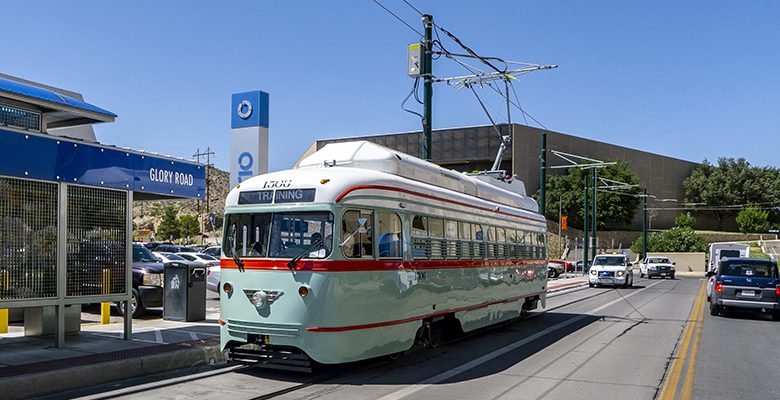One hundred years ago, the United States had a public transportation system that was the envy of the world. Today, outside a few major urban centers, it is barely on life support. Even in New York City, subway ridership is well below its 1946 peak. Annual per capita transit trips in the U.S. plummeted from 115.8 in 1950 to 36.1 in 1970, where they have roughly remained since, even as population has grown.
This has not happened in much of the rest of the world. While a decline in transit use in the face of fierce competition from the private automobile throughout the 20th century was inevitable, near-total collapse was not. At the turn of the 20th century, when transit companies’ only competition were the legs of a person or a horse, they worked reasonably well, even if they faced challenges. Once cars arrived, nearly every U.S. transit agency slashed service to cut costs, instead of improving service to stay competitive. This drove even more riders away, producing a vicious cycle that led to the point where today, few Americans with a viable alternative ride buses or trains.
. . .
What happened? Over the past hundred years the clearest cause is this: Transit providers in the U.S. have continually cut basic local service in a vain effort to improve their finances. But they only succeeded in driving riders and revenue away. When the transit service that cities provide is not attractive, the demand from passengers that might “justify” its improvement will never materialize.
Read the whole piece at CityLab.com.


Interesting perspective. Especially in a community like El Paso, where it was not that long ago that the only ‘mass’ transit available to El Pasoans was private in nature. I think it was in the late 70’s that the City decided to buy up local public transportation companies, and created SCAT (Sun City Area Transit, but most of us just called it Scatter Chicanos Around Town), and then, with a duly approved by election tax increase, that became Sun Metro, and the rest is headed down the tubes. I have long thought that simple geography works against most efforts to provide true public transit services here, but of course it is complicated by the economy, the infrastructure that exists, the kind of work available, and oh, so much more.
In Fast Food Nation, the author talks about it at length and specically mentions El Paso…